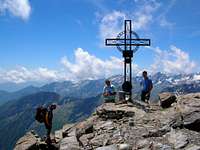-
 8637 Hits
8637 Hits
-
 85.36% Score
85.36% Score
-
 20 Votes
20 Votes
|
|
Mountain/Rock |
|---|---|
|
|
45.57730°N / 7.53254°E |
|
|
Mountaineering |
|
|
10381 ft / 3164 m |
|
|
Overview
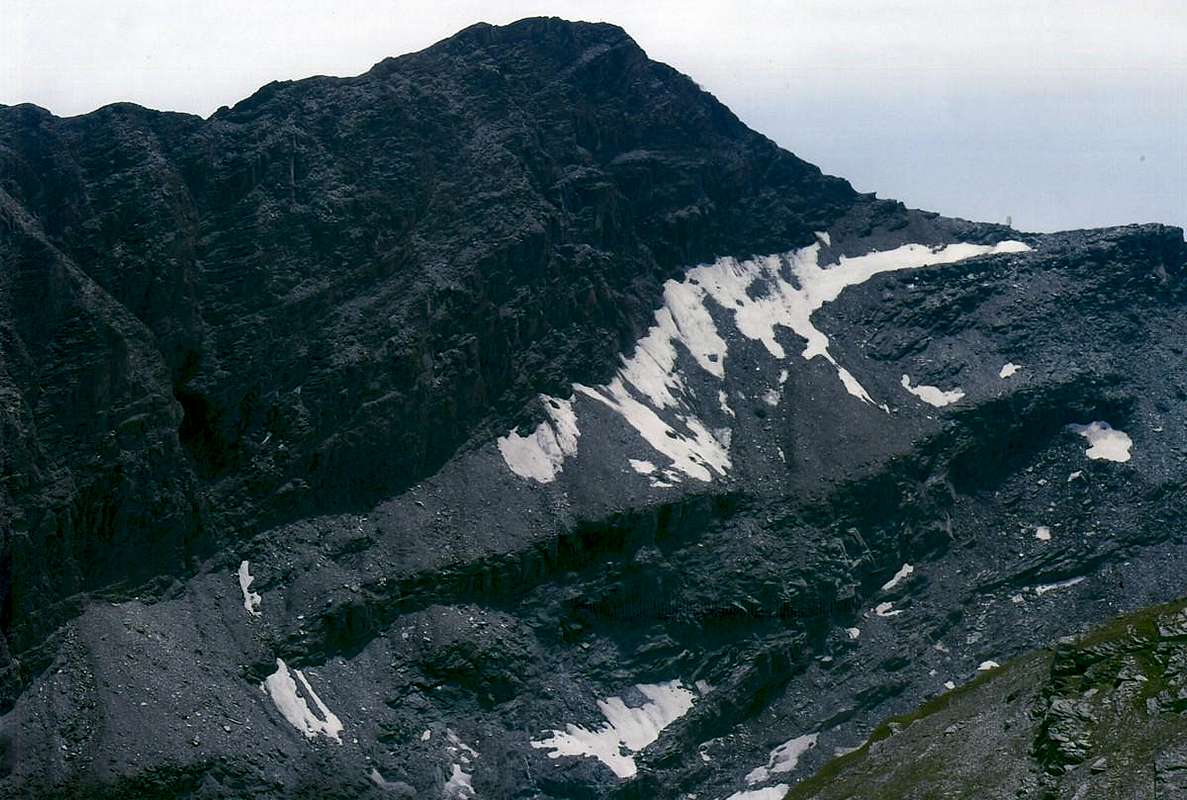
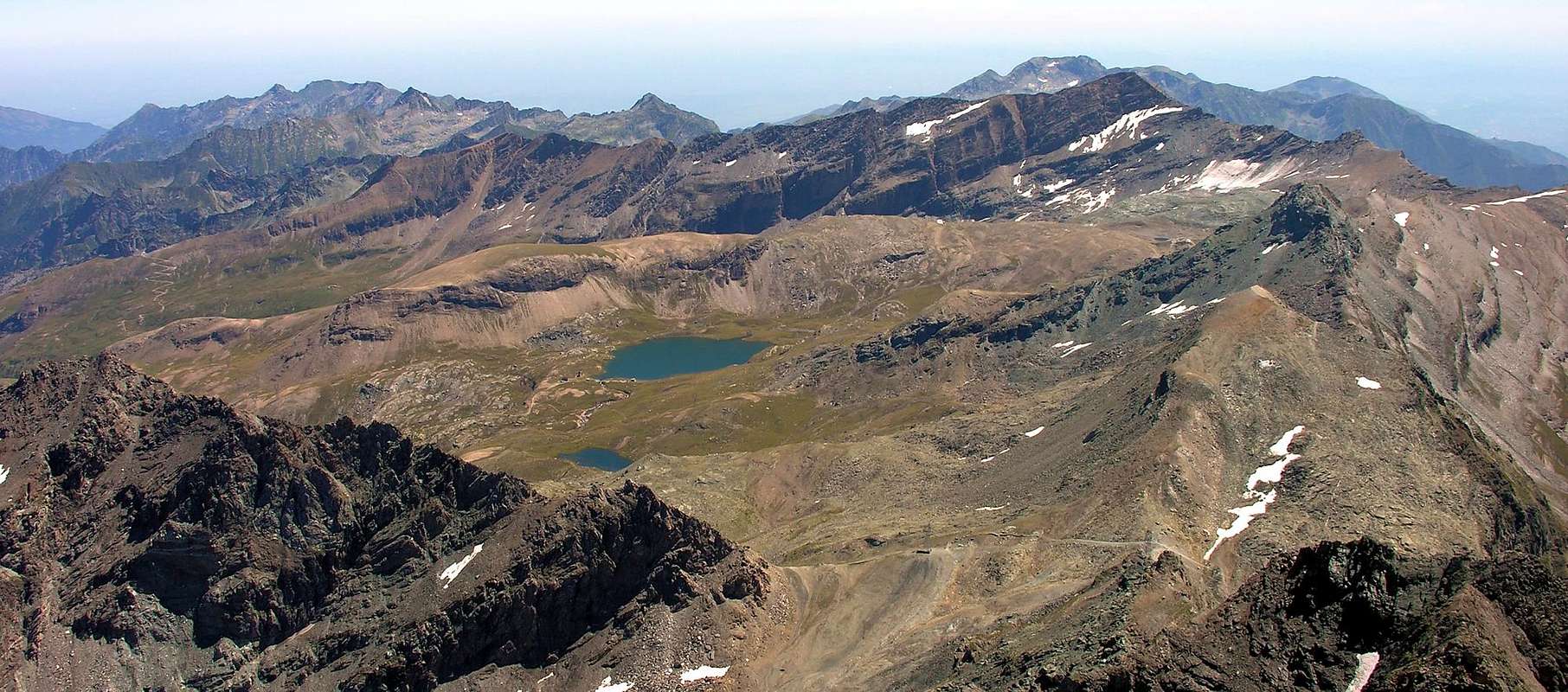
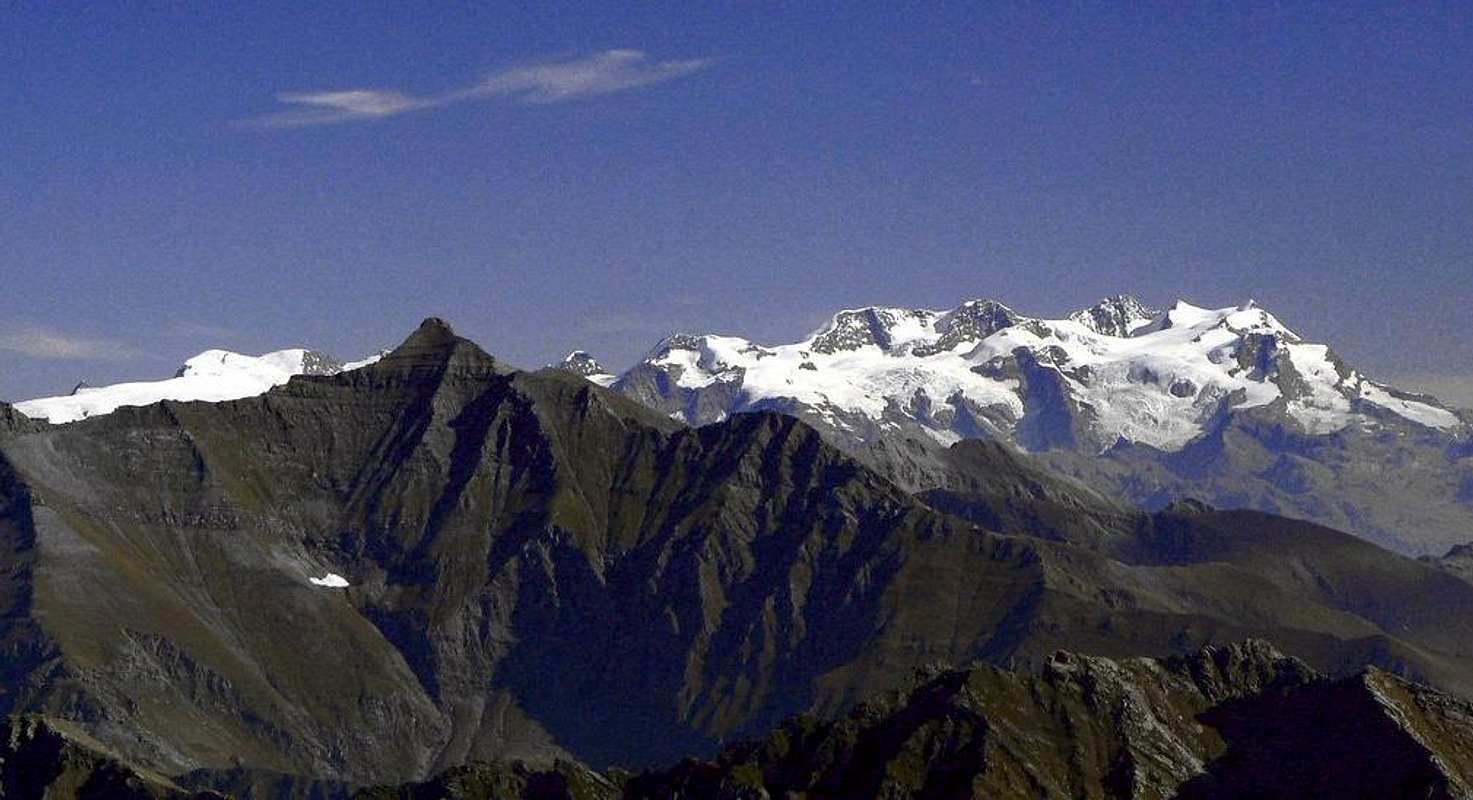
First Ascent
- First on the summit: unknown or Cap. Albert della S.M.S., (1831).
- In winter: Scipione Cainer, Adolfo Gervasone and Carlo Ratti, (Feb 14th, 1888).
- W Ridge (Standard Via from Colle della Rosa): unknown.
- Southern Slope between Colle della Rosa and half of Western Crest (variant): unknown; variant via starting from Campiglia Soana Valley.
- W-NW Wall: Alessandro Jaccod, (Dec 28th, 1971).
- N-NW Face: Osvaldo Cardellina and Emilio Bertona, (Jun 27th, 2007).
- N-NW Face of Cima Beccher and NE Ridge in final part: Osvaldo Cardellina, Emilio Bertona and Nicola Colajanni, (Aug 24th, 2003).
- NE Arête (from Cime Beccher): Unknown.
- S-SE Arête (from Borra Pass): Unknown.
- W-SW Face (Direct Via after descent from Colle della Rosa): Osvaldo Cardellina, Marco Cossard and Giuseppe Lamazzi, (Oct 20th, 1983).
Getting There
BY CAR:- From Torino, Milano, etc: Motorway A5. Exit Pont Saint Martin Commune for then to continue on SS.26 to Hône and Bard Municipalities.
- From Switzerland: through the Grand Saint Bernard Tunnel or the namesake pass. Drive to Aosta, Verrès to Hône and Bard Communes.
- From France: through Mont Blanc Tunnel or Petit Saint Bernard Pass. It isn't necessary to take Motorway A5 (neighbor Morgex Municipality): you can drive on SS.26, in the direction of Aosta towards Nus, Chatillon, St. Vincent, Verrès, Hone and Bard Municipalities.
- Aeroporto "Corrado Gex" Saint Christophe (Aosta).
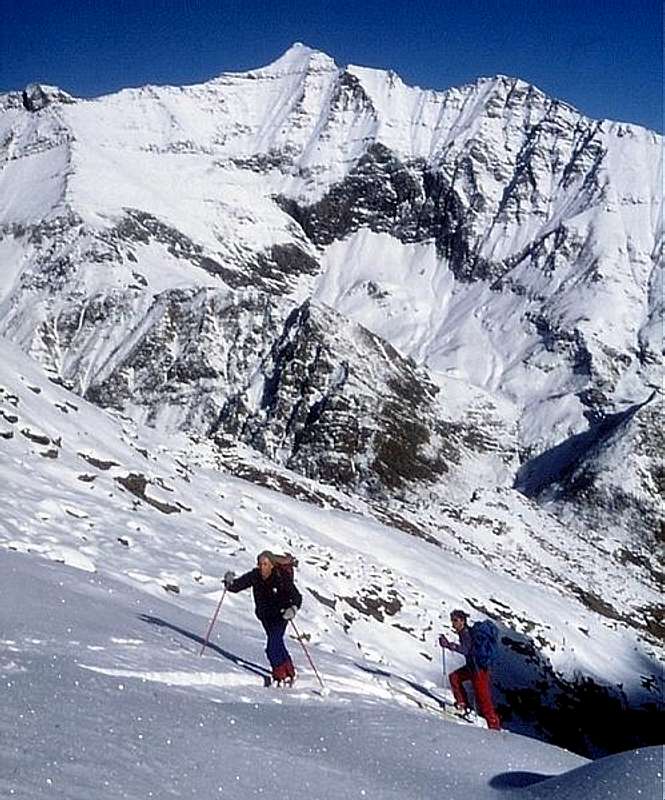
Road Itineraries
If you take the motorway, exit in Pont St. Martin and follow the direction Aosta along the SS.26; take care after Donnas: right side, immediately after the village, you can see approx. 100 meters of the roman consular road and a nice arc. A few hundreds meters after Hône Municipality (364m; neighbor the Fortress of Bard Commune, famous for having temporarily stopped Napoleon in the Italian Campaign 1800) there is a bridge left side, over the Baltea River, with the indication Champorcher; follow it. Drive a few km, till the village of Château, and look right side for the indication Petit Mont Blanc. Follow this road before in asphalt, not too large, for a few of km. Part is asphalted, the most part no. Usually the conditions of this first part are good. Follow this road till Dondena old Village; at the end a sign forbids the traffic after the parking. Usually the conditions of this second part are good, but it is best to inquire in the area as often (surely after the winter) vary somewhat. Take care and park in the upper zone, definitely wider. When you start walking, you will find a table with the indications, and the map of the area. Come down left till the Torrent of Ayasse, pass over the stone bridge and along the dirt road, passing near an old dilapidated barracks (* which functioned as an secondary outpost, after the Champorcher Fenêtre, to stop the incursions to Bard Fortress of the Army Corps of General Duhesmes by the Austrian Army Suvarow indulged in the defense of the territory by the inhabitants of Valley), arrive in short time to Dondena Refuge (2.097m; 0h'15).Approaches & Routes
Route A: from Dondena (2.110m) to come down the small bridge on the Torrent Ayasse for the old Real Road, concomitant with the path n° 7B/7C/High Route number 2, to reach the Lake Miserin (2.582m 1h'20). From the Lake it travel in South direction, for small gravelly valley, the path n° 7 for the Rosa Pass (2.957m); to direct itself under the Northern Slope of Punta dell'Asgelas and with a enough long diagonal one to Southeast to surpass the small Glacier dei Banchi (a passage of I°+/II°- under the hill asks for caution!).Via A: da Dondena (2.110 m) scendere al piccolo ponte sul Torrente Ayasse per la vecchia Strada Reale, concomitante con il sentiero n° 7B/7C/Alta Via numero 2, raggiungeendo il Lago Miserin (2.582 m 1h'20). Dal Lago percorrere in direzione Sud, per valloncelli detritici, il sentiero n° 7 per il Colle della Rosa (2.957 m); dirigersi sotto il Versante Settentrionale della Punta dell'Asgelas e con un diagonale abbastanza lungo a Sud-est superare il piccolo Ghiacciaio dei Banchi. Un lastrone instabile di I°+/II°- appena al di sotto del colle richiede attenzione e lo si supera tramite una larga "spaccata" in un piccolo diedro-camino facendo bene attenzione agli appigli ed agli appoggi, sempre precari.
Variante d'Avvicinamento: dal Villaggio di Dondena raggiungere l'omonimo rifugio (2.192 m) ma, lasciando sulla destra la strada poderale per il Lago del Miserin, continuare invece verso Sud con la successiva; arrivando ad un primo bivio per l'Alpe Bese (2.239 m) lasciare questa deviazione ad Ovest e continuare sino al bivio che conduce alle tre Alpi Pendant (2.297 m, 2.391 m, 2.414). Da questo punto abbandonare la strada poderale e salire tramite il sentiero n° 6C fino al successivo bivio per l'Alpe Chilà Dèsot (2.370 m); scartando questa verso Est, procedere invece sul fondo del vallone sulla sinistra idrografica del Torrente dei Banchi arrivando nei pressi della Quota 2.520 metri, caratterizzata da un grande masso, che si supera con una ricerca di passaggio tra rocce umide e rotte. Proseguire, senza più sentiero, lungo poco evidenti tracce che attraversano i vari piccoli emissari del Ghiacciaio dei Banchi pervenendo ad un'area di scure banconate rocciose levigate dal ritiro del medesimo; piacevolmente risalirle e, giunti al culmine, gradualmente spostarsi verso destra o Sudovest raggiungendo, tramite una piccola giogaia, i bordi inferiori dello stesso. Continuando sempre nella stessa direzione e superando una serie di "clapeys" (grossi blocchi) infilati nella neve, a volte pericolosi perché instabili, raggiungere la precedente via tramite un breve diagonale ancora a destra seguito da salita diretta. Dal colle percorrere la Cresta Ovest (Via Normale da Champorcher-Dondena) superando un risalto per una cengia sul versante Campiglia (Piemonte) con un passaggio di II°, abbastanza esposto e richiedente cautela sopattutto con neve fresca ed aggirabile anche a Nord ma per mezzo d'un passaggio più difficile che inizialmente avviene con una corta discesa. Continuando più facilmente sul filo di cresta od appena al di sotto sulla destra (Sud) tramite rocce trite ed una piccola traccia facilmente si raggiunge la Vetta (4h'00). Discesa: lungo la stessa via di salita altrimenti tramite traversata sulla Cresta Nordest verso la Bocchetta del Marmo Bianco, sopra l'Alpe Pendant Superiore.
Route B: from the junction to the Alps Pendant continue through the dirt road, concomitant with trail n° 6 until the next fork in the dirt road to Alp Chila Désot (Lower; (2.370m), reaching the same and the above Alp Pendant III° or Higher, located on the Northwest slopes of Bec Pendant. From this go up to Southeast first through meadows with scattered blocks and then through a track that climbs the steep but easy North side of the Nozzle of the White Marble (2.901m); reached this large saddle, climb on the next watershed to the Quote 2.931 meters, or avoid it just to the left (Southeast). Continue easily along the ridge to the nearby Northern Cima Beccher (2.940m) through broken rocks and proceed to the next (2.973m, 3.038m, 3.068m; cairn) or Beccher Southern Peaks with the same characteristics as the path above in a vertical wall facing West-southwest on the extreme appendages Glacier of Bantses. From this point, flexing slightly to the left (South), the ridge forms a fairly wide saddle characterized by large blocks. After a short descent and have passed through the same, you are returned to the primary direction of reaching a secondary elevation above a small notch or carving; crossing the same on large slabs and blocks, and then returned to the ridge edge and smashed by rocks you will come to another elevation, called the Cima delle Fontane (3.084m; arrival point for trips departing by Ski-Mountaineering from Piamprato). Climbed over the hump after also rounded up later and another more pointed and tiny, with a view to the Summit at last, by a sudden more aerial and exposed to the East to reach the final part; this is exceeded, bypassing a section of steep rocks to the West (I°+/II°-) to conclude more easily in the end to the Summit (EE/F +; 1h'15 from the "Bocchetta"; 2h'00/2h'15 from Alp Pendant; 3h'30/4h'00 from Dondena Shelter or Dondena Village).
Via B: dal bivio per le Alpi Pendant continuare tramite la stada poderale, concomitante con il sentiero n° 6 fino al successivo bivio per l'Alpe Chilà Dèsot (2.370 m) raggiungendo la medesima e la sovrastante Alpe Pendant III° o Superiore, posta alle pendici Nordoccidentali del Bec Pendant. Da questa dirigersi a Sudest dapprima attraverso prati con blocchi sparsi e poi tramite una traccia risalente il ripido ma facile Versante Nord della Bocchetta del Marmo Bianco (2.901 m); raggiunta questa larga sella salire sullo spartiacque la successiva Quota 2.931 metri, oppure evitarla immediatamente a sinistra (Sudest). Continuare facilmente in cresta verso la vicina Cima Beccher Settentrionale (2.940 m) tramite rocce rotte e proseguire verso le successive (2.973m, 3.038m, 3.068m; ometto di pietre) o Cime Beccher Meridionali con le medesime caratteristiche di percorso al di sopra d'una parete verticale rivolta ad Ovest-sudovest sulle appendici estreme del Ghiacciaio dei Banchi; da questo punto, flettendo leggermente a sinistra (Sud), la cresta forma un'abbastanza larga sella contraddistinta da grandi blocchi. Dopo breve discesa ed averla attraversata, si ritorna alla primaria direzione raggiungendo un'elevazione secondaria precedente un intaglietto; attraversando il medesimo su grandi lastre e blocchi per poi rientrare sul filo di cresta e tramite rocce sfasciate si perviene ad un'altra elevazione, detta Cima delle Fontane (3.084 m; punto d'arrivo per le gite Sci-Alpinistiche con partenza da Piamprato). Scavalcata anche l'arrotondata gobba successiva ed un'altra più aguzza e minuscola, con finalmente in vista la Cima, tramite un tratto più aereo ed esposto ad Est raggiungere la parte finale; questa si supera aggirando un muretto di rocce ripide ad Ovest (I°+/II°-) per concludere più facilmente nella parte terminale (EE/F+; 1h'15 dalla Bocchetta; 2h'00/2h'15 dall'Alpe Pendant III°; 3h'30/4h'00 dal rifugio o da Dondena).
Difficulties
These routes can be considered PD- and F+.Huts
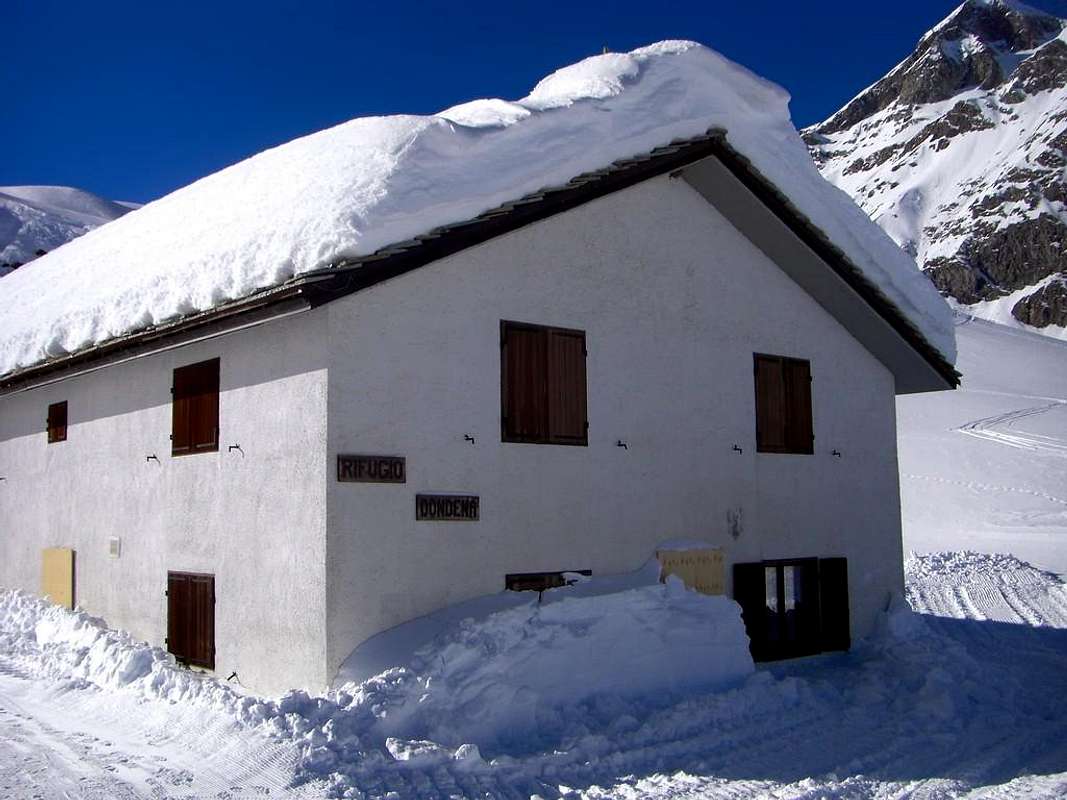
Internet: Rifugio DONDENA Email: info@rifugidellarosa.it
Campings
Remember that free camping is forbidden (except for emergency reasons, over 2.500m, from darkness until dawn).Mountain Conditions
- You can get meteo information at the official site of the Regione Valle d'Aosta:
- Valle d'Aosta Meteo
Webcam
- WEBCAM on Aosta Valley:
- Webcam
Books and Maps
BOOKS:- "Guida delle Alpi Occidentali" di Giovanni Bobba e Luigi Vaccarone C.A.I. Sezione di Torino Volume II (parte II), 25 Maggio 1896.
- "Guida dei Monti d'Italia–Emilius Rosa dei Banchi Parco del Mont Avic" di Giulio Berutto e Lino Fornelli-Club Alpino Italiano/Touring Club Italiano, Marzo 2005 (in Italian).
- "I Rifugi della Valle d'Aosta" di Stefano Ardito, Ed. Guide iter, Febbraio 2003.
- "Guida della Regione Autonoma Valle d'Aosta" di Mario Aldrovandi; Ed. S.P.E. di Carlo Fanton, Torino 1964.
- "Diari Alpinistici" di Osvaldo Cardellina e Indice Generale accompagnato da Schedario Relazioni Ascensioni 1964-2021 (inediti).
- Enrico Editore Ivrea-Aosta "Gruppo del Gran Paradiso" 1:50.000.
- I.G.C. Istituto Geografico Centrale Torino "Ivrea Biella e Bassa Valle d’Aosta" (n° 9), 1:50.000.
- L'Escursionista "Valle di Cogne Carta dei Sentieri" 1:25.000.
Important Information
- REGIONE AUTONOMA VALLE D'AOSTA the official site.
- FONDAZIONE MONTAGNA SICURA Villa Cameron, località Villard de la Palud n° 1 Courmayeur (AO) Tel: 39 0165 897602 - Fax: 39 0165 897647.
- SOCIETA' GUIDE ALPINE DI COGNE Tel. 347/9473526 – 328/1373728.
- A.I.NE.VA. (Associazione Interregionale Neve e Valanghe).
Useful Numbers
- Protezione Civile Valdostana località Aeroporto n° 7/A Saint Christophe (Ao) Tel. 0165-238222.
- Bollettino Meteo (weather info) Tel. 0165-44113.
- Unità Operativa di Soccorso Sanitario Tel. 118.











